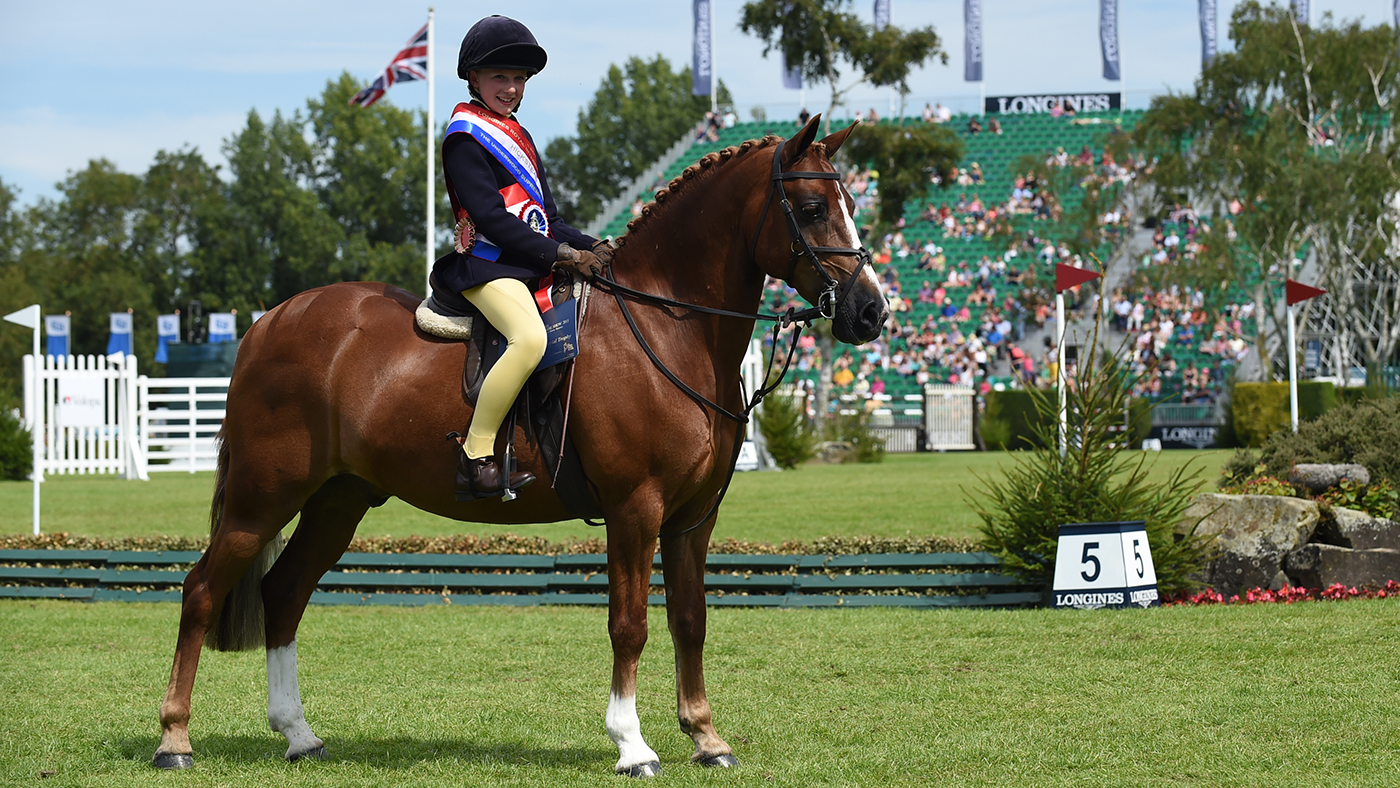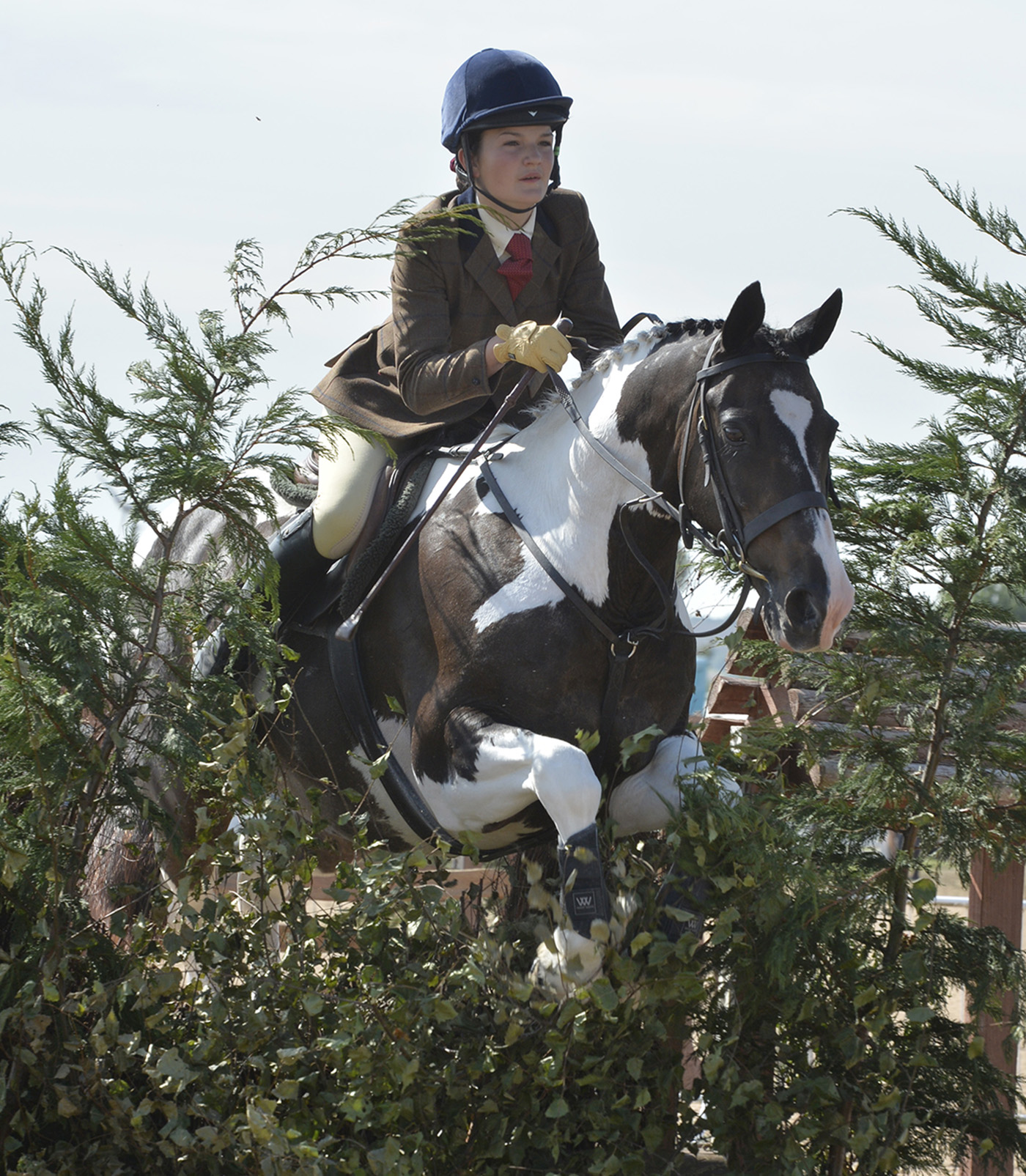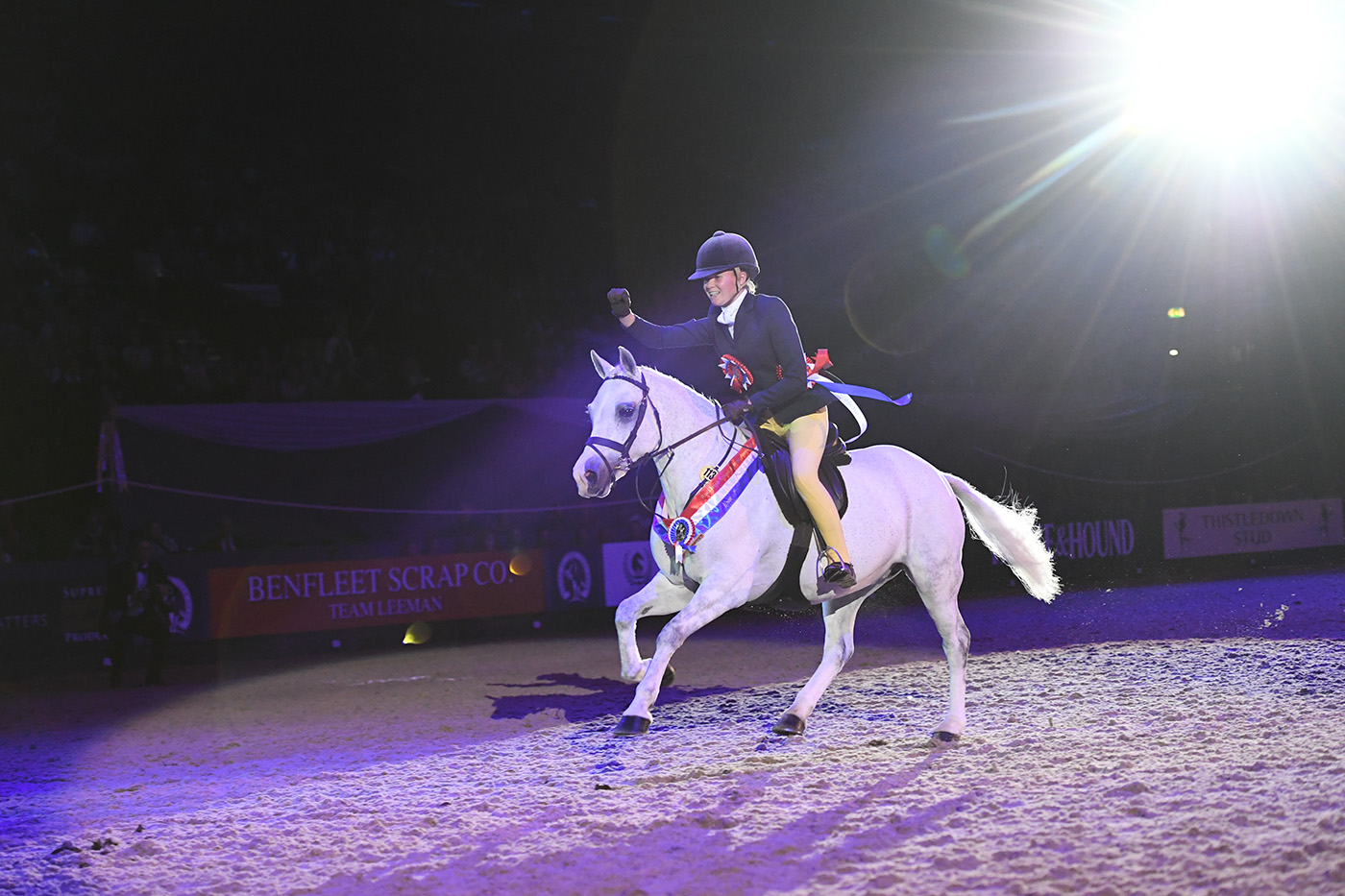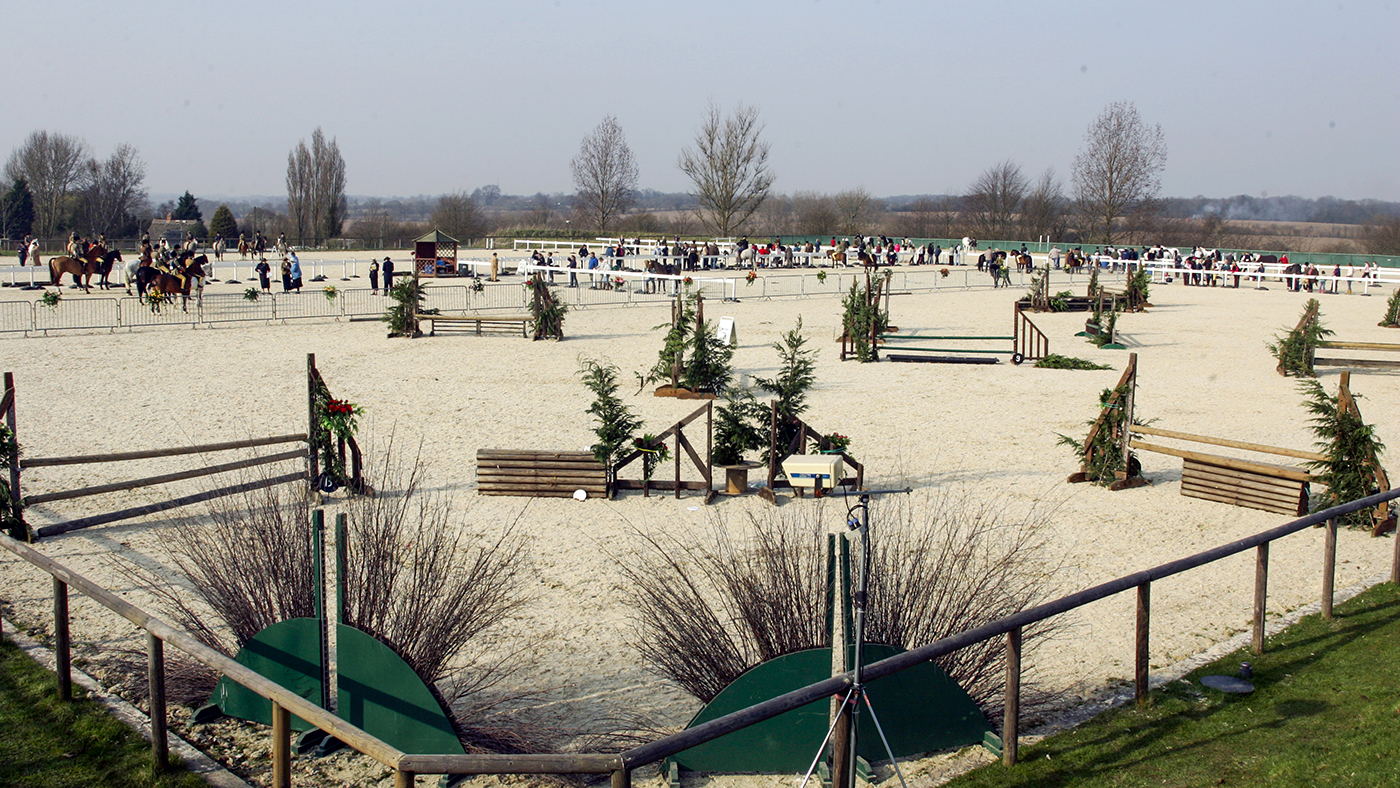Looking for golden nuggets to improve your pony’s success in these popular showing classes? We ask top judges what is key to a winning performance and what common mistakes riders make to throw away a class, plus all the essential info you need to know if you’re just starting out...
The working hunter pony (WHP) classes are some of the most popular on the showing circuit today. They are an all-round test of both pony and rider, with the judges assessing not only type, suitability, conformation, paces and manners, but also accurate and stylish jumping ability.
How did WHP classes begin?
WHP classes began at local shows and gymkhanas in the 1960s, and as they gained popularity, they came under the umbrella of societies such as the British Show Pony Society (BSPS), who first published rules to regulate the section in 1970.
“The WHP class evolved from replicating a day’s hunting, when you would arrive at the meet well turned-out and on a smart animal that is mannerly in company,” says judge and BSPS WHP team chef d’equipe Philip Hilton. “The pony should have good conformation — a major factor leading to a long and useful life as a hunter with minimal days off through injury — and most importantly, it should be able to jump a range of natural jumps cleanly, in an efficient and comfortable manner.”

The Ryder-Phillips’ Young Dragonara was an incredibly successful 15hh working hunter pony of his era.
This blueprint hasn’t changed down the years and the section has also proved a major “launchpad” for WHP riders who have gone on to star in racing, show jumping, eventing and other disciplines at the highest levels.
Nowadays, separate WHP classes exist for plaited and native ponies, but pure and part-bred animals — particularly Welsh section B, New Forest and Connemara — often double up and compete successfully in both sections.
Also included below:
- What the judges look for
- Judges’ pet hates
- Conformation advice
- Judges’ top tips
- Who can compete
- Class format
- Fence heights
What the judges look for
“Judges will be looking for combinations going forward in a balanced, rhythmical canter, meeting each fence without a break of stride and showing harmony between pony and rider,” says Philip. “It is always good to see a pony pricking its ears and attacking the fences, giving its jockey an enjoyable ride.
“In cradle and nursery stakes classes, manners are even more imperative. Ponies should be a ‘safe conveyance,’ carrying their young jockeys in a relaxed manner, once again with that rhythmical, even pace and not rushing.”
Leading judge and current BSPS chair, Pat Pattinson, concurs. “In cradle stakes, my first priority is the safety of the small jockey, and I will always go for the ‘tickety-boo’ round where the pony bobs round and looks after the rider,” she says.
“In nursery stakes, I look for a slightly stronger type and one that is more forward-going in its approach to fences — ie less trot and more in a balanced canter pace.
“In the open 133cm class I would look for a different type again — one that is more onward-going and has a good partnership with the jockey.”

133cm working hunter pony Beat the Boss won both nursey stakes and open classes under Susie Eddis and took the supreme pony title at Royal International Horse Show.
Pat continues: “I always think the transition from nursery to open classes is vital as it sets the basis to go on through the heights all the way up to intermediates; it’s like going from the primary section of school to being with the ‘big ‘uns’.
“I am also looking for a good, flowing round, with rapport and partnership between the pony and jockey. Are they in harmony? Are they a team working together? When it happens, it shows — the jockey is thinking and the pony is listening.
“I always admire the jockey who has a bad round — usually through their own error of judgement — but takes it on the chin and comes out smiling.”

Jumps in a working hunter class are designed to replicate the types of fences found out hunting and can include a bullfinch, where the pony will jump through the thinner branches at the top.
Mary Allison has also judged working ponies for many years. “Unfortunately, we very seldom see a whole class of WHPs together now as there are usually two judges and two rings, which benefits exhibitors who may have ponies that are ‘hot,’ in company,” she says.
“On the odd occasion when we do see them all together in a go-round, I like them to walk into the ring looking as though they are enjoying life, and with a good length of stride. Jogging into the ring is a ‘no-no’ for me.
“When they come in individually, I like to see them walk on a decent length of rein — not having their back teeth pulled out. I was always taught that if a horse/pony has a good walk, they usually have the ability to do whatever else is asked of them.
“In the show, I like a good, free-moving pony that covers the ground in all paces, and if I set a show, I expect it to be adhered to; failure to do so loses marks with me. A smile from the jockey always helps as well!”
Judges’ pet hates
Pat Pattinson: “Rudeness — it really irritates me! After saying an initial ‘good morning’ or ‘good afternoon,’ I usually ask, ‘Do you know where you are going?’ Or for the younger jockeys, ‘How many fences are you going to jump?’ The replies can sometimes be quite surprising, to say the least!
“I hate the ‘stop and start,’ erratic ‘rush and pull’ rounds. I will always go for the constant pace wherever possible, and would reduce the style mark for a round which I considered to be poor, even if it was technically clear.”
Mary Allison: “I hate to see a pony pushed out of its natural rhythm because people think that by trotting faster, they are getting an extension — they’re not!
“I also hate to see ponies galloped flat out — it’s far better to lengthen the stride properly and lower in a gallop. They would hunt all day like that!”

133cm working hunter pony Coco Bongo was crowned supreme pony at HOYS 2019.
Conformation advice
Pat Pattinson: “A WHP should be of hunter type with quality limb and substance, combined with the ability and scope to jump.”
Mary Allison: “I like WHPs to have a reasonable amount of good flat bone to correspond with their topline, but I do like quality as well.
“A good length of rein is essential, with a good sloping shoulder and a good powerful hindleg and second thigh.
“I prefer that they move straight but as long as a dish is not too pronounced and they don’t ‘plait,’ I can forgive it.”
Judges’ top tips
“Wherever possible, the rider should establish a good pace and try to maintain it,” says Pat. “A good round style-wise may not always be clear, and although it’s a contentious issue, sometimes a really good round has an unlucky pole.
“There are 20 marks for style and judges should use these accordingly, depending on how they see it on the day. I would give credit for the round but maybe dock a style mark — the combination has already paid the price of the knockdown by losing 10 marks.
“The key to success is often walking the course correctly.”

A working hunter pony class can be held on grass or on a surface and may include natural obstacles where available.
Philip Hilton agrees, adding: “Competitors should take this opportunity to observe any outside distractions, uneven ground or placing of hazards which may affect their pony’s concentration during the round.
“It is important to walk the route which you will be taking. This should be a line which gives your pony the best opportunity to see and jump the obstacles without sharp turns or angles.
“It’s always important to walk the conformation ring too. Quite often they are almost an afterthought — small, of a strange shape and sometimes on poor ground. To plan your show is therefore imperative. Those 10 marks for manners can make the difference between a red rosette and no rosette at all.
“Whilst judges will be looking for good conformation — just as with other showing classes — the WHP is mainly a performance class, with most of the focus put on a clear round.
“‘Handsome is as handsome does’ is a saying that best describes a good WHP.”
Who can compete?
WHP classes are mostly run under the auspices of the BSPS, National Pony Society (NPS) and Ponies (UK).
The championship finals at Horse of the Year Show (HOYS) and Royal International (RIHS) are the most coveted on the circuit, but also well up there on the ‘to aim for’ list is the Desert Orchid section at the BSPS summer championships. This is always an extremely challenging course; just to jump clear is considered a major achievement and in fact, earns an bonus 20 marks.

The Desert Orchid class at the BSPS Summer Championships is widely consider as the ultimate challenge in working hunter pony circles.
The NPS and BSPS also stage team competitions, where representatives from each pony height section compete in Area, home international and full international competitions both here and abroad.
Under BSPS rules, WHP classes are run in novice, restricted and open classes, depending on the experience and winnings of the pony.
Nursery and cradle stakes are designed for very young riders, and thereafter, although there are also age limits in place for riders, the maximum size of pony is the main defining feature: 122cm (12hh); 133cm (13hh); 143cm (14hh) and 153cm (15hh), before intermediate workers — over 148cm but not exceeding 158cm — cater for riders up to the age of 25. In addition, the BSPS runs ‘tiny tots’ classes for ponies up to 122cm and riders up to the age of nine.
In native ranks, there are four height divisions to cater for the different breeds: 122cm, 133cm, 143cm and over 143cm. These also have finals at Hickstead and HOYS.
How are WHP classes run?
A competitor first takes on the jumping course, which should be of rustic, natural appearance. Then — usually in a separate space — they enter individually and complete a show, which should demonstrate all paces and include a gallop, before the animals are stripped (shown in hand with their saddle removed) for a conformation assessment.
WHP results are arrived at through a marks system, based on faults — or not — at individual fences, style whilst jumping, conformation, manners and way of going. The maximum score is 100, and only in a championship do the judges’ confer.
How big are the fences?
One of the principal benefits of competing in classes affiliated to one of the societies is that the course will have been designed by a recognised course builder, and is unlikely to be oversized or ‘trappy,’ as can often happen at local unaffiliated shows. Courses for HOYS and RIHS qualifiers will always be slightly more difficult and built up to height.
BSPS rules for dimensions in open classes say:
- Tiny Tots Stakes: max 40cms (height) 40cms (spread)
- Cradle Stakes: max 60cms x 60cms
- Nursery Stakes: max 75cms x 85cms (85cms x 95cms in RIHS qualifiers and final)
- 133 cm class: max 90cms x 1m
- 143cm class: 1m x 1.10m
- 153cm class: max 1.05m x 1.15m
- Intermediate class: max 1.15cms x 1.25cms.
Water or water trays are not permitted in tiny tots or cradle stakes, and only in RIHS qualifiers and the open and Desert Orchid classes at the BSPS summer championships.
The full rules can be found at www.bsps.com
You may also be interested in…

‘He was a rascal even in retirement’: final farewell to working hunter pony legend
The gelding counted wins at the Royal International Horse Show and Horse of the Year Show among his top accolades

Nail your canter changes — what the 2018 RIHS working hunter pony jump judge will be looking for
Get to know your 2018 Hickstead working hunter pony judge...

H&H’s guide to M&M working hunter pony classes: how to ride each breed and what the judges are looking for
Read this expert insight to help you make the most out of your competition season and avoid common mistakes

Horse & Hound’s definitive guide to show pony classes *H&H Plus*

